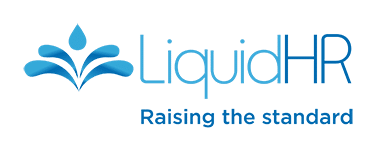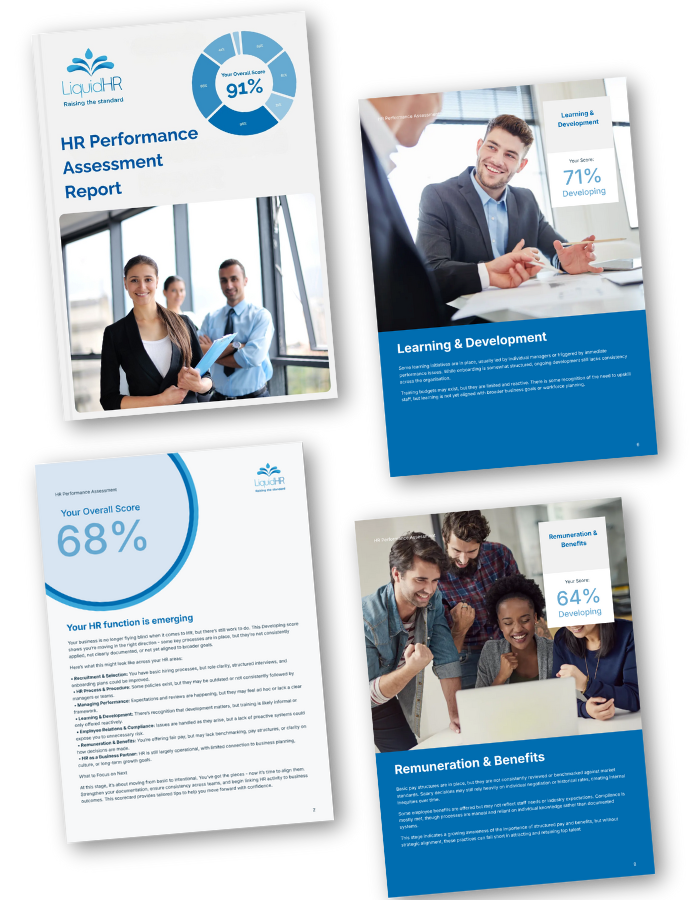In recent years, a growing number of organisations in the United States have been cutting back on their Diversity, Equity, and Inclusion (DEI) initiatives. This trend is driven by increasing opposition to DEI efforts across the country. However, this anti-DEI sentiment isn’t confined to the U.S. alone. According to TDC Global, a consultancy specialising in DEI integration, Australia is witnessing similar trends.
Polarisation of DEI Efforts in Australia
TDC Global’s Head of Marketing, Angelica Hunt, recently spoke with HRD about the shifting landscape of DEI in Corporate Australia. According to Hunt, there’s a clear divide between organisations that are deeply committed to DEI and those that are scaling back their efforts.
“We’re seeing a polarisation across the market,” Hunt said. “Some organisations are heavily invested in DEI, while others are rolling back because they were never fully committed in the first place.”
Hunt attributes this rollback to companies that initially adopted DEI as a superficial, “tick-box exercise” rather than an integral part of their corporate strategy. These firms, viewing DEI as merely an external branding tool, are now taking the opportunity to scale back.
A Shift in DEI Priorities
Despite the rollback from some companies, Hunt points out that other Australian organisations are not abandoning DEI entirely but are instead repositioning their efforts. Rather than scaling down their initiatives, these companies are redistributing resources due to limited budgets or the influence of external factors, particularly what’s happening in the United States.
“Some organisations are responding to the backlash in the U.S. by shifting their messaging,” Hunt explained. “They’re focusing more on inclusion, which is seen as easier to defend than diversity.”
How U.S. Sentiments Are Influencing Australia
In the U.S., several large corporations, such as Tractor Supply and Harley-Davidson, have scaled back their DEI efforts following customer backlash. Meanwhile, some executives are promoting a new hiring philosophy centred on “Merit, Excellence, and Intelligence” (MEI) as an alternative to DEI.
The U.S. Supreme Court’s ruling against race-conscious admission policies at Harvard University and the University of North Carolina has further fuelled anti-DEI sentiment.
Hunt noted that Australian organisations often mirror trends in the U.S., which raises concerns about the future of DEI efforts in Australia. As DEI-related backlash grows, companies are rebranding their programs to be more gender-neutral and inclusive to avoid potential criticism.
DEI Fatigue: A Growing Challenge
Another factor contributing to the rollback of DEI initiatives in Australia is what Hunt described as “DEI fatigue.” This fatigue stems from a sense that, while DEI has been widely discussed, progress has been slow.
“DEI has been a constant topic of conversation, but tangible action and impact haven’t followed at a considerable rate,” Hunt said. “People are starting to question the value of these initiatives.”
The Potential Impact on Corporate Australia
If the U.S. trends continue to influence Australia, Hunt is concerned that this could jeopardise key areas of progress, particularly in the representation of Indigenous people and women in leadership.
“One group that has been prioritised in Australia is Indigenous talent. If these DEI programs are scaled back, it could negatively impact the representation of First Nations people in the workforce,” Hunt warned. “Similarly, progress in female representation may also be at risk if companies pull back on initiatives focused on developing high-calibre female talent.”
The Role of HR in Reinvigorating DEI
Hunt believes that for DEI efforts to truly succeed, they must be integrated into the broader business strategy. DEI should be incorporated into leadership KPIs and business objectives, and its ROI should be measured and communicated clearly.
“DEI impacts every part of an organisation, and when it’s confined to the HR department, it diminishes its influence,” Hunt said. “HR leaders need to rally support from across the organisation and demonstrate both the social and financial value of DEI initiatives.”
Final Thoughts
While some organisations may be scaling back on DEI due to external pressures or budget constraints, it’s clear that the conversation around diversity and inclusion is far from over. As U.S. trends continue to influence Australia, it’s up to HR leaders and committed organisations to ensure that DEI remains a core part of their corporate strategy, driving meaningful change in the workplace.
1 in 3 Australian Employees Ready to Quit Over Lack of Workplace Flexibility
As businesses across the globe implement new office-return policies, a significant portion of employees in Australia are prioritising workplace flexibility. According to a recent report by Robert Half, more than a third of Australian employees would leave a company if it does not offer the flexibility they desire. This trend highlights the ongoing shift in employee expectations following the rise of remote and hybrid work arrangements during the pandemic.
The Growing Demand for Flexibility in Australia
In a poll of 1,000 full-time office workers conducted by Robert Half, 39% of employees revealed they would leave their current employer if flexibility around where they work is not offered. Additionally, another 39% said they would turn down a job offer if it lacked flexible working options. These statistics emphasise that workplace flexibility has become a critical factor in both talent retention and acquisition.
Nicole Gorton, director at Robert Half, stressed the importance of adapting to the evolving work environment:
“The future of work is not about returning to the past. It’s about finding new and innovative ways to meet the needs of both employers and employees. A hybrid model, which balances in-office collaboration with remote work, could be a win-win solution for many industries,” she said.
The Push for Office Returns
Despite the clear demand for flexibility, many employers are pushing for a return to on-site work. Companies like Amazon and Tabcorp are among those calling their employees back to the office after years of remote or hybrid arrangements during the pandemic. In addition, the New South Wales government recently mandated that public servants return to the office, citing the importance of shared, in-person work experiences.
However, forcing employees back into the office without offering flexibility could have costly consequences for businesses, particularly in terms of talent loss.
The Cost of Returning to the Office
According to Robert Half’s report, many employees believe they deserve a premium for giving up the autonomy and flexibility they enjoyed during remote work. The study found that 44% of employees would be willing to return to full-time office work, but only if they received a salary premium. The data showed that the salary premium expectations vary:
- 18% would accept a premium of between 1% and 10%.
- 16% would require a premium of between 11% and 20%.
- 9% would need more than a 20% salary increase.
These demands are driven by the costs associated with commuting, potential childcare expenses, and the loss of personal time, all of which add to the financial burden of returning to the office.
Nicole Gorton explained, “Many workers believe they deserve a premium for giving up the flexibility and autonomy of remote work due to commuting costs, potential childcare expenses, and the loss of personal time, which many consider are all factors that contribute to the financial burden of returning to the office full-time.”
How Employers Can Adapt Without Offering Salary Premiums
While some organisations may be able to offer salary premiums, others might find it financially challenging. For those employers, Gorton suggests that there are alternative ways to make the office return more appealing. She recommends improving the office environment and providing professional growth opportunities to employees.
“Employers can instead focus on enhancing the office environment, offering career development opportunities, and highlighting the benefits of in-person work arrangements. These steps can help make the return to the office more attractive,” she added.
Final Thoughts: Flexibility is Non-Negotiable
The findings from Robert Half’s report reveal that flexibility is no longer a perk—it’s a necessity for many Australian employees. As companies navigate the post-pandemic workplace, it is clear that flexibility will play a crucial role in retaining top talent. Employers who fail to meet these expectations risk losing valuable employees to competitors who are more willing to offer the flexibility they seek.
The future of work in Australia is a hybrid model, combining the best of both worlds: in-office collaboration and remote flexibility. Businesses that can strike this balance will not only attract and retain top talent but also thrive in the evolving workplace landscape.
Why HR Outsourcing is Growing Exponentially
The rise of HR outsourcing can be attributed to several factors, each of which reflects broader changes in the global business environment:
- The Need for Cost Efficiency
One of the primary drivers behind the growth of HR outsourcing is the need to reduce operational costs. Managing in-house HR functions can be expensive, particularly for small and medium-sized enterprises (SMEs) that may lack the resources to support a full HR department. Outsourcing allows businesses to access expert HR services without the overhead costs associated with hiring, training, and maintaining an internal team.
Outsourced HR providers typically offer flexible pricing models, enabling businesses to pay for only the services they need, whether it’s payroll management, benefits administration, or talent acquisition.
- The Complexity of HR Compliance
Navigating the complex landscape of employment laws, tax regulations, and industry-specific compliance requirements is a daunting task for any company. As governments continue to introduce new employment regulations, businesses are increasingly turning to HR outsourcing providers who specialise in compliance management.
These providers stay up-to-date with local, national, and global regulations, ensuring that businesses remain compliant with laws governing everything from employee benefits to workplace safety. This helps companies avoid costly legal issues and penalties while freeing up internal resources for more strategic activities.
- Rapid Technological Advancements
The evolution of HR technology has revolutionised how businesses manage their workforce. From cloud-based HR systems to artificial intelligence (AI)-driven recruitment tools, HR outsourcing providers are leveraging cutting-edge technology to deliver faster, more accurate, and data-driven HR solutions.
These advancements allow businesses to automate repetitive tasks such as payroll processing, leave management, and performance tracking, significantly reducing administrative burdens. Outsourcing providers are also able to offer businesses access to advanced HR software without the need for costly investments in technology infrastructure.
- Focus on Core Business Activities
As companies strive to become more agile and focused on their core operations, they are increasingly outsourcing non-core functions, such as HR. By delegating HR responsibilities to an external provider, businesses can concentrate on their primary objectives—whether it’s product development, customer service, or growth strategies—while ensuring that HR tasks are managed by experts.
This shift enables companies to operate more efficiently, make better use of internal resources, and remain competitive in their respective markets.
- Globalisation of the Workforce
The rise of remote and global workforces has made HR functions more complex than ever. Managing a geographically dispersed team requires a nuanced understanding of different employment laws, cultural norms, and compensation practices across various regions.
HR outsourcing providers bring expertise in managing global HR operations, making it easier for businesses to hire and retain talent across borders. They also help with international payroll, benefits, and compliance, reducing the administrative burden for companies with teams in multiple locations.
How to Leverage HR Outsourcing for Business Growth
With the rapid growth of HR outsourcing, businesses must adopt a strategic approach to ensure they get the most out of their partnerships. Here are a few key considerations for leveraging HR outsourcing effectively:
- Choose the Right Provider: Not all HR outsourcing providers are created equal. It’s essential to partner with a provider that understands your industry, business goals, and company culture. Look for a provider with a proven track record of delivering high-quality HR solutions and strong customer service.
- Start with Specific Functions: If you’re new to HR outsourcing, start by outsourcing specific tasks such as payroll, compliance, or benefits administration. This allows you to test the waters and assess the provider’s performance before expanding the scope of their responsibilities.
- Maintain Internal Oversight: While outsourcing offers many benefits, it’s crucial to maintain internal oversight of your HR strategy. Keep an internal point of contact to manage the relationship with the outsourcing provider, track performance, and ensure that outsourced services align with your company’s long-term goals.
- Measure ROI: Regularly evaluate the return on investment (ROI) of your outsourced HR services. Are you seeing cost savings? Are HR processes more efficient? Are employees more satisfied? These metrics will help you determine whether outsourcing is delivering the value you expect.
Final Thoughts: The Future of HR Outsourcing
As businesses continue to navigate the complexities of the modern workplace, the demand for HR outsourcing will only increase. With the ability to reduce costs, improve efficiency, and access specialised expertise, HR outsourcing has become a critical strategy for companies of all sizes.
By choosing the right provider, maintaining oversight, and strategically leveraging external HR services, businesses can unlock new opportunities for growth and innovation. As HR outsourcing continues its exponential growth, organisations that embrace this trend will be better positioned to succeed in today’s competitive landscape.
Update to Our Resource Hub
As legislative changes unfold and HR best practices continue to evolve, Liquid HR has updated its Resource Hub once again to provide clients with up-to-date, compliant, and forward-thinking HR templates.
Our most recent update includes:
- Checklists (2 files)
- Contracts and Agreements (2 files)
- Forms (6 files)
- Letters (5 files)
- Policies (31 files)
A reminder that all ongoing/retained clients receive complimentary access to the Resource Hub. If you require assistance logging in, please don’t hesitate to contact us.
Liquid HR is a leading HR consulting firm helping businesses of all sizes to navigate the complexities of human resource management, while providing tailored HR services based on their unique requirements, including HR Outsourcing, Recruitment and HR Advisory Services.
With offices in Melbourne, Sydney and Brisbane, we work with businesses across Australia.
For more information, please contact us on 1300 887 458 and speak with one of our HR Consultants.












